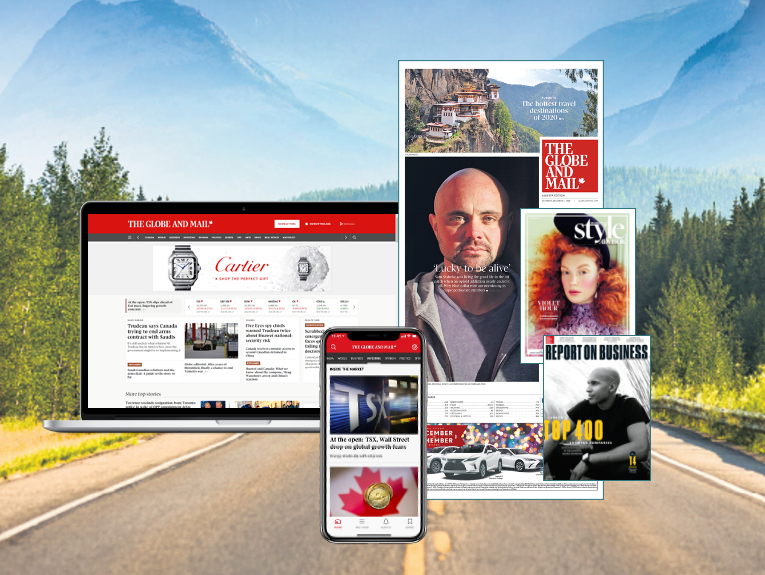Discover the secret to ‘blissfully happy marriages’ between advertisers and agencies
Kathryn Fitzwilliam, agency search consultant and former senior marketer at Kraft Canada and Maple Leaf Foods, describes the positive impact of QBS (Qualification-Based Selection) on matching advertisers with agencies.
Kathryn, before we start on QBS, what are the general trends you see in terms of the client/agency relationship in Canada?
The ‘projectification’ of the relationship has created real challenges for both clients and agencies. For agencies, it has a huge impact on a consistent revenue stream. The biggest challenge I hear from agencies is how can we turn our projects into long-term relationships? From the client side, the consequence of seeing everything as a project with independent costs is that they’re not buying ongoing brain power from the agency. Clients will complain ‘where are the great ideas for new opportunities?’ but they’re not paying for them.
It’s a mess right now. I don’t think there is a client or an agency person who wouldn’t agree with that. There are obviously examples of great partnerships where incredible work is being done that is moving the business. Just like there are some blissfully happy marriages, but there are also a lot of divorces.
In light of this, can you introduce us to the origins of QBS and why these make it a strong basis for agency selection?
It was created in the US for architects and engineers. There is a law – if you’re building a public building in the US, that the decision makers cannot choose the lowest possible bid. Unfortunately, there have been cases of buildings and bridges falling down because of cost cutting. QBS was designed for complex, service dense contracts where it was determined that the race to the bottom pricing would severely impact the safety and the quality of the service being offered. This didn’t start from the agency world, it came from process people and procurement experts who rigorously looked at all of this.

How would you describe QBS to people new to the concept?
It takes the traditional agency search process and flips it on its head. RFP [Request for Proposal] searches start with a wide list of agencies and ask for their pricing models as part of their evaluations. Lowest cost can be a deciding factor instead of who is the most qualified. Qualification-Based Selection (QBS) starts with a smaller list of agencies based on early research, and a rigorous process to evaluate which is the most qualified agency. Fair price is then negotiated with the most qualified agency.
And how do marketers react to a process that isn’t price led but requires them to disclose their budget at the outset?
I am pleasantly surprised at how little pushback there is from marketers that they aren’t doing a comparative pricing exercise. Clients will often say ‘we want to find an agency at the lowest possible cost.’ And I say to them, ‘no, you don’t. If you really wanted the lowest possible cost for your social campaign, you would hire a 14-year-old in his parents’ basement. That’s the cheapest but not what you want and not what you need.’ That gets clients thinking about smart spending, not necessarily lowest possible spending.

What does this require from advertisers?
It requires the client to do a lot of thinking, decision-making and strategy development up front. They’ve got to know what they want, how much they’re spending, and they’ve got to gather the right people, the right voices, to be part of the conversation. Because it’s structured in this way, QBS ensures a more knowledgeable and smarter decision-making process. And it’s faster because you’re not revisiting decisions made three weeks ago. I spend a lot of time leading clients through the process to make sure we get it right. It’s like any good marketing plan – you start with a strategy, you agree to it, and then you execute against it.
There is this sense that the QBS approach takes a long time but it doesn’t. It takes three to four months on average, depending on the complexity, scope, and scale of the search. Not unlike the time it takes to hire a new employee.
What is the response so far from marketers that have used QBS in the selection process?
Clients who have used QBS think that it is an incredible process. It makes a lot of sense. They see themselves being pulled through a decision funnel in a very logical and measured way. They asked all the questions that they wanted to ask. They got the answers that made them feel comfortable, were delighted with the agency decision, felt that the financials were fair and reasonable for both parties and after the first year, were still highly satisfied with agency performance.
There’s one last piece. As a practitioner, I found this rewarding. I got complimentary letters from agencies who were participants in the QBS process who didn’t win. Agencies write me notes saying that QBS is the fairest, clearest, most straightforward process they had ever been through. That tells me that the QBS process leads to both very positive client results but also creates positive client reputations in the industry.
What are the barriers to adoption of QBS?
The first barrier is, many clients believe, ‘how hard can it be to find an agency? Let’s just do it ourselves.’ That often means ‘I know four or five agency people, I’ll call them and they’ll come in and make presentations to me.’ I know first-hand a number of cases of clients taking the DIY approach and being dissatisfied with the selected agency within a year.
Secondly, I don’t think clients know a lot about QBS. It is endorsed by the ICA [Institute of Canadian Agencies] but we have to get the word out about QBS.
How do the principles of QBS apply after the agency appointment?
There are certain guidelines that should be used to run the business based on the goals that are set out in the QBS process. And those are the tools that can help to manage the relationship. But it should be remembered that QBS in itself is a search tool, not a relationship management tool. I use additional tools in my practice to help clients through the onboarding and ongoing agency performance management.
My advice to clients is, one, don’t forget onboarding and make sure it’s done well. And, two, be ready in six months’ time to do some form of an interim evaluation because this is a critically important relationship to start off on the right footing and commit to closely managing.
Finally, are there examples of where brands have used QBS to good effect?
I’ve used QBS for a packaged goods food company that wanted to find a full-service agency. They had been using ‘mom and pop’ agencies in project work but wanted more in-depth strategic planning and a full suite of agency services.
I have worked with a hi-tech start-up company that had an in-house digital production department. They realized that their business had grown so exponentially that they could no longer support it in house and needed to move it to a dedicated agency. We needed to find a digital production expert who could build a new function to take the place of in-house work.
In both cases there was a need to find an external resource but in doing so to fundamentally change how work got done in their company. They were going to reorganize work and reorganize what needed to be in-house versus out-of-house. Each required an agency search and a change management process as well. QBS provides the rationale and templates for clients to manage the process independently. However, choosing this approach requires sufficient time and in-house resources to ensure success. When clients absolutely need to engage in an agency search, and don’t have the resources to manage it themselves, I provide support and guidance to help with the upfront strategy, a smooth transition and the organizational change management that is necessary to succeed.
Kathryn Fitzwilliam Consulting is a partner of the Institute of Canadian Agencies. Report on Marketing is where leading Canadian agencies showcase their insights, cutting-edge research and client successes. The Report on Marketing provides a valuable source of thought leadership for Canadian marketers to draw inspiration from. Find more articles like this at the Report on Marketing.
























 Online learning programs offer a unique solution to accessibility problems by eliminating the need for a physical presence, allowing students to complete work anytime, anywhere. This learning style provides freedom and flexibility for many, such as students from remote areas far from institutions, or primary caregivers who would otherwise need to arrange day-care.
Online learning programs offer a unique solution to accessibility problems by eliminating the need for a physical presence, allowing students to complete work anytime, anywhere. This learning style provides freedom and flexibility for many, such as students from remote areas far from institutions, or primary caregivers who would otherwise need to arrange day-care. However, there is still much work to be done. Supporting and expanding these initiatives is essential in ensuring that every individual can benefit from digital education and learning regardless of their background or situation. Investing in technology, providing flexible learning options, and fostering partnerships can create a future where education is accessible to all.
However, there is still much work to be done. Supporting and expanding these initiatives is essential in ensuring that every individual can benefit from digital education and learning regardless of their background or situation. Investing in technology, providing flexible learning options, and fostering partnerships can create a future where education is accessible to all.


